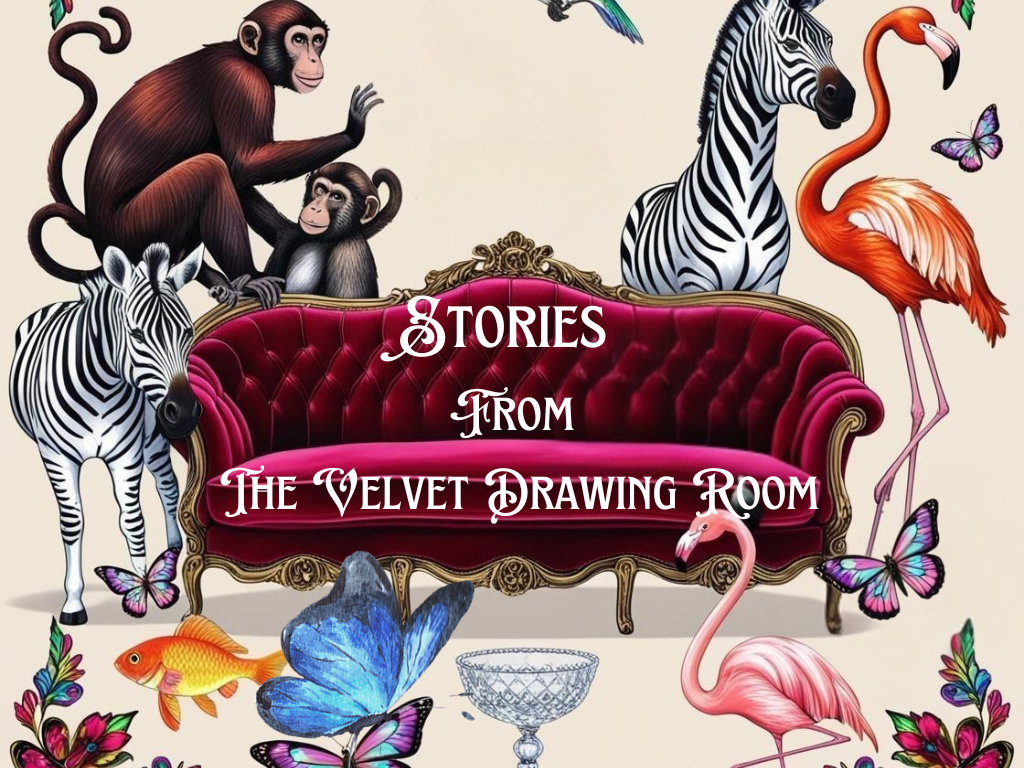The firm of James Gardner
Bird Preserver and Stuffer, Naturalists, Taxidermists, Furriers & Plumassiers and Entomologists
Dating Guide to James Gardner cases
James Gardner’s style
Brightly coloured backgrounds in watercolour or gouache
Well prepared groundwork
Ebonised cases, most often 3-sided
Label to interior and often on reverse of case
Considered not to have used a robust-enough recipe for pest control and some examples suffer from insect damage.


Dating Guide to James Gardner cases
Looking at the work of James Gardner with its labels carrying various addresses then comparing them to the firm’s advertising in the newspapers of the 19th century gives a picture of the breadth of the James Gardner business and creates a dating guide to James Gardner cases.
When combined with further research of the census, land surveys, rate books and trade directories the Dating Guide to James Gardner has been created with high precision.
After doing this research, I saw the real picture of the life and work of the James Gardner firm which came to life to such an extent that, although they did business from many addresses at different periods from the early 19th through to the early 20th centuries we can know with a high level of accuracy which James Gardner created the work, when and where.
This is very useful for dealers, buyers and sellers, but most of all to collectors and enthusiasts because the perspectives and details of the business of these 19th century people give such interesting and added provenance to these beautiful treasures.


HIGH HOLBORN IN 1890
WEST END AND HOLBORN
The Oxford Street and Holborn Addresses
The firm of James Gardner worked from several addresses in London’s West End at Oxford Street and also in London W.C. at High Holborn over the course of its’ history.
The address most commonly found on their case labels is 426, Oxford Street, because they traded there for no less than 40 years, but they had several other addresses, mostly also in Oxford Street, at various times. Between 1844 and 1917 they worked from several numbers in Oxford Street: 29, 31, 149, 159*, 292, 371, 426 and 427, also at 52 High Holborn.
But unravelling the story of where, when and who took quite some time.
*I find no evidence of the Gardners working from 159 Oxford Street although this date is stated by Christopher Frost in his book "A History of British Taxidermy" (and could be a typo, or it's possible that some renumbering of the street is the reason for this).
And in creating the Dating Guide to James Gardner here is what I found....
1837
The firm of James Gardner, led by James Gardner senior (1803-1873) established its early business at 52 High Holborn. This address was also their residence, as the census records confirm.
There had been a long history of the Gardner family as preservers and naturalists trading from a nascent Oxford Street in the West End during the 18th Century. My research on this this aspect is ongoing, but the family themselves state this fact in 1927 when they finally closed their business.
1840's - 1862
426 Oxford Street and 52 High Holborn sometimes in combination, sometimes a single address on the label and denotes mostly the work of James Gardner Senior.
These were the two trading addresses of the James Gardner firm. Both father and son worked together during this period. The address of 426 Oxford Street was used in advertising for their presence at The Great Exhibition of 1851 and its the address most commonly found on their cases since it was their “headquarter premises” over a period of 40 years.
1862-1869
426 Oxford Street and 292 Oxford Street and 52 High Holborn in combination
or 292 Oxford Street and 52 High Holborn in combination
This is father and son working together in the family business, which is expanding.
James Gardner senior was leading the business from the main office at 426 Oxford Street, while his son was driving the business at number 292 Oxford Street and maintaining a presence at High Holborn.
1869-1881
426 Oxford Street and 292 Oxford Street and 52 High Holborn are retained and are used in combination on labels of James Gardner Junior.
371 Oxford Street is added. This address appears singularly on labels by James Gardner Senior between 1869-1873.
After 1873 and up to 1881 you still see this label with the single 371 address, but there’s a twist.
1869 is the year that the family separation happened. James Gardner Senior moves into number 371 Oxford Street, leaving his son to manage the original businesses at 426, 292 Oxford Street and 52 High Holborn.
My research shows that in 1869 James Gardner Senior at the age of 66 yrs moved from the family residence in Holborn to live at number 13, Berwick Street.
Very soon afterwards, by 1870, he is living and working at the premises of 371 Oxford Street, and he was already the owner of the building. His tenant at number 371, Mr John Lewey Jordan was given notice to quit, and James Gardner Senior commences a new branch of the Gardner business.
All looks innocent until you realise that his son James has just left his wife, Mary, and their children and a newborn baby (Joseph James) to live with a servant girl named Virginia Ellen Ball. He is twice the age of Virginia (and possibly more than twice!) and it’s Victorian morals at play that cause the family split.
This label with the 371 Oxford Street address continued to be used after James Gardner Senior’s death in 1873 and up to 1879, but it’s not a Gardner who is carrying out the work!
It was two ex employees of James Gardner Senior, and they were both the executors of his will. These two adopt his trade name and continue to produce work at 371 Oxford Street under his name.
Later, we see James Gardner Junior fiercely counter this situation. The hijack of the James Gardner company finally ends after 1879 and the 371 address is discontinued.
I’d guess that there’s not much chance of differentiating effectively between the actual work of James Gardner Senior and the two employees during the period of 1873 to 1879, since they were apprenticed or employed under him and their work would be hard to separate.
See more about the James Gardner family and the details of the Victorian scandal that rocked their business
up to 1881
References on James Gardner labels to the “Royal Polytechnic College”.
After being founded in 1838 at 309 Regent Street as The Royal Polytechnic Institution, it was renamed in 1882, and refounded as the Regent Street Polytechnic by Quintin Hogg, a philanthropist who focused on providing education to working-class men and women. Today, it is part of the University of Westminster.
Where you see labels with this reference, it suggests, but does not prove, a date not much later than 1881. However James Gardner would have continued using his printed labels, regardless of its name change, so we cannot be certain that the label did or did not confer specific dates.
The institution served to educate the public with early attractions including demonstrations of the Diorama, Phantasmagoria shows, and working models of machinery.
1882-1883
381, 292, 149, 141, 29 Oxford Street and 52 High Holborn.
29 Oxford Street is the factory (late 426) and the “chief office” and there’s some evidence to suggest that it may have existed and been the chief office in the period before 1882, since the address is mentioned in the list price that Gardner published in his manual “Taxidermy Made Easy”.
149 Oxford Street (late 371) is the showroom.
381(late 292) is the branch.
52 High Holborn is the head office branch and the long term family dwelling.
All of these addresses were in operation at this time, and we see the height of the business and demands for their services. James Gardner Senior has died, and James Gardner Junior continues to expand, having rid himself of the two ex-employees who hijack the business name under his father’s reputation – Mr Frederick Yearly and Mr Edward William Wilson.
1884-1890
381, 149, 141, 29 Oxford Street and 52 High Holborn.
These addresses are still in use up to 1890 but number 292 Oxford Street has been closed. This took place approximately after the end of 1883.
James Gardner Junior and his son, Joseph James are the creators of work and drivers of the business at this time.
This film from the British Film Institute shows horse buses in Oxford Street in 1898.
The images help us to imagine what the world of Oxford Street and the context of James Gardner’s business was.

1890-1916
149, 29 Oxford Street and 52 High Holborn.
After 1890 there remain two addresses in Oxford Street at numbers 149 and 29 (which is the “factory”). The West End is still thriving, but the height of the movement has peaked. 52 High Holborn is retained.
By this time, James Gardner Junior is elderly and deaf, and he dies in 1920. Joseph James Gardner is running the business. The building at 29 (and 31) is owned by James Gardner Junior. Numbers 29-31 was a premises with three floors and a basement. Number 29 was their “factory”.
1916-1920
29 and 31 Oxford Street and 52 High Holborn.
After 1916, and during the middle of World War One there remain two addresses in Oxford Street, numbers 29 and 31 which were basically one and the same – a three storey building with a basement. The buildings at 29 and 31 Oxford Street are owned by the family.
In 1920, 29-31 Oxford Street premises was put up for sale, evidenced by the notices in the newspaper including in the The Illustrated Sporting and Dramatic News seen in April 1920.
52 High Holborn is retained until 1927 (and owned), but there’s little appetite to continue the business because Alfred James, son of Joseph James, and the great grandson of James Senior is tragically killed in action in 1915.
1920-1927
52 High Holborn.
The ravages of the War have taken their toll. The West End business has already finished and the family take the difficult decision to close the Holborn shop. There is no one to carry one, and the premises and surrounding buildings were bought by a developer to turn into flats and offices.
On Tuesday 23rd March 1920 the first portion of the remaining James Gardner stock from the Oxford Street shop was sold at the famous Steven’s Auction Rooms in Covent Garden, London. The sale included Bird Skins, Birds in Cases, Heads and Horns, Cabinets and Books and Lepidoptera and Coleoptera, together with British Birds Eggs and similar.
IF YOU HAVE ANY IMAGES OF THE WORK OR LABELS OF JAMES GARDNER AND YOU’D LIKE TO SHOWCASE THEM HERE, TOGETHER WITH A FULL CREDIT
Discover more from thevelvetdrawingroom.co.uk
Subscribe to get the latest posts sent to your email.

























